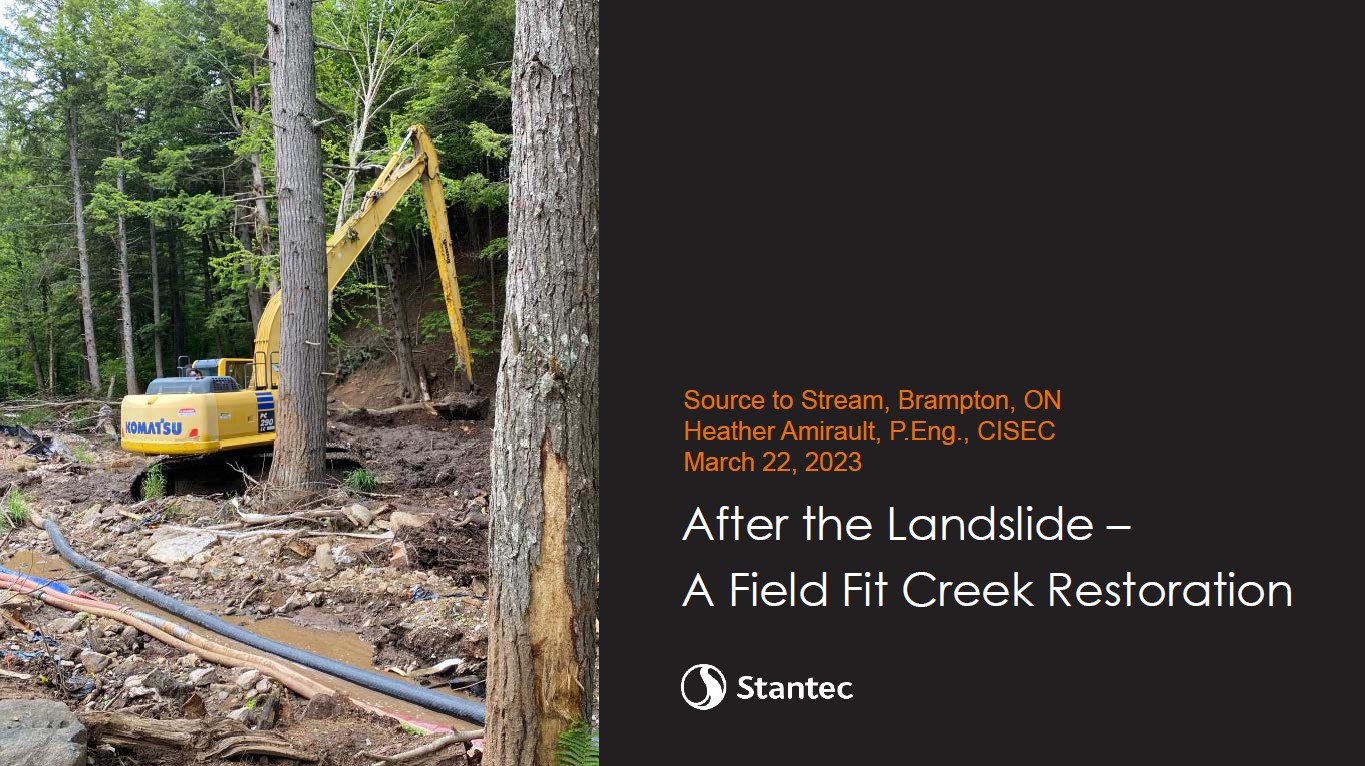TRACK 2, DAY 1
ABSTRACT
In spring of 2022, a landslide occurred next to a small creek in a deep valley. The landslide debris swept away trees, buried the creek, filled the creek valley, caused flows to back up and create a large pond, disconnected the upstream portion of the channel from the downstream portion of channel, and created a fish barrier.
This presentation will review the process that was used to control flows through the landslide site, remove the debris, and restore the damaged section of watercourse. Unique site conditions included the potential for contaminated soils, a bridge and popular walking trail, and Species at Risk including Atlantic Salmon (endangered) and American Eel (special concern). Given the unique site conditions and the time sensitive nature of the environmental impacts, a quick response was critical, necessitating a compressed regulatory timeline and the need to field fit the restoration working from a conceptual plan.
We will review project timelines, permitting, design, layout, and construction of the restoration. A discussion on high-tech and low-tech design and layout approaches will be included. Discussion on communication and planning items that should be included even in emergency response situations will also be presented. Lessons learned working with a contractor with limited in water work experience will be shared.
ABOUT THE PRESENTER

Heather Amirault, Stantec Consulting Ltd.
Heather is a Water Resources Engineer at Stantec Consulting Ltd. She specializes in the areas of stream rehabilitation using natural channel design and in geomorphic assessment. Her recent projects include the removal of two dams in Kitchener, ON, restoration of Kokanee spawning areas in Kelowna, BC, and the realignment of two watercourses in Milton, ON. Heather has worked on stream restoration and assessment projects across Canada and the US.

